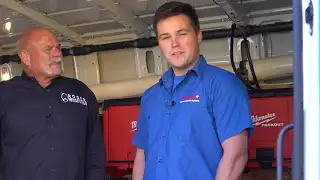In today’s plumbing industry, it’s all too common to see subpar workmanship and corner-cutting. Whether you’re a homeowner frustrated by flawed installations or a fellow plumber noticing declining standards, you’ve likely asked yourself why mediocrity seems so widespread. Below are some key reasons this trend continues—and what can be done to raise the bar.
1. Eroding Quality of Training
Many apprenticeship programs now receive far less funding and have lowered standards to push more people through quickly. This minimal classroom instruction and inadequate hands-on practice result in novices who lack a thorough grasp of codes, safety, and problem-solving. Reduced expectations mean tradespeople enter the field with shaky fundamentals, fueling widespread mediocrity.
2. Cheaper Materials and Fittings
Profit-driven distributors and plumbing contractors often source the cheapest available parts. Outsourcing production to places with lower manufacturing costs can compromise durability and quality. From flimsy fixtures to low-grade fittings, these inferior components require frequent replacements, creating a “race to the bottom” that normalizes slipshod workmanship.
3. Decline in Pride and Craftsmanship
In the past, plumbers took immense pride in neat, code-compliant work. Today, many view plumbing as just another job and see no reward in upholding stellar craftsmanship. Without pride in the trade, installations become visibly careless—crooked pipes, unsealed joints, and sloppy fixes. True excellence demands personal investment and a standard of doing it right for its own sake.
4. Lax Accountability
While some regions have strict licensing and continuing education requirements, others barely enforce them. If plumbers don’t fear losing licenses or facing fines, they have little incentive to improve. Vague warranties and service guarantees rarely deliver real penalties for repeat mistakes. This lack of rigorous oversight allows poor workmanship to thrive.
5. Reduced Competition
With large contractors merging or dominating local markets, competition for higher-quality services can vanish. When there’s little risk of losing customers, there’s little push to adopt better tools, train staff more thoroughly, or address subpar performance. Monopolies simply minimize effort, knowing they’ll still get the calls.
6. DIY Culture
A surge in do-it-yourself videos and internet tutorials encourages homeowners to attempt tasks that should be handled by professionals. When these quick fixes go wrong—leading to hidden leaks or worse—people lose faith in plumbing’s complexity. This undermines the skill level that true plumbers bring, blurring lines between amateur efforts and expert work.
7. Fast, Not Best Hiring Practices
Many companies fill labor shortages by prioritizing speed over skill. New hires are judged on whether they can pump out a job quickly rather than on strong technical abilities or a desire to master the trade. Crews end up with underqualified personnel who can’t handle complex work, reinforcing a cycle of unimpressive results.
Conclusion
From slashed training standards to cheap materials and an erosion of pride, multiple factors have led to a noticeable dip in overall plumbing quality. Changing this demands rethinking how we recruit, train, and reward talented individuals in the trade. It also means stricter regulations, more competition, and a renewed emphasis on the honorable craft of plumbing.
If you want to push beyond mediocrity, consider specialized training—like learning slab leak detection—from organizations that focus on raising the profession’s standards. One such group is Leak Pro, which provides the tools and education to help you excel instead of merely getting by. By committing to better practices, both pros and homeowners can help restore plumbing to the respected craft it was meant to be.




